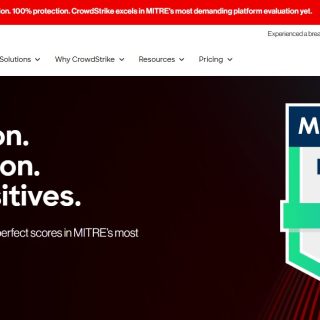
Cybersecurity has come a long way since the early days of computing, yet the foundational philosophy behind many contemporary solutions has remained surprisingly static. This philosophy, rooted in a detection-based reactive approach, originated in the nascent era of computer viruses and has led to a significant paradox in modern cybersecurity strategies.
The Birth of Detection-Based Solutions
Picture it: the 1980s. Big hair, neon colors, and the dawn of computer viruses. As the first digital pests started to wreak havoc, the immediate response was to create something to identify and squash them. Enter antivirus software, the digital equivalent of a fly swatter.
One of the very first antivirus products was developed by Bernd Fix in 1987. Fix, a German security researcher, created a program to remove the Vienna virus, a simple yet destructive piece of malware. His work marked the beginning of a new era in digital defense, setting the stage for more advanced antivirus solutions. Think of him as the Indiana Jones of early cybersecurity, whipping viruses into submission.
These early tools were all about identifying signatures—unique strings of code that distinguished one virus from another. It was a bit like identifying criminals by their distinctive mustaches. However, this laid the groundwork for a reactive approach: wait for the virus to show up, identify it, and then swat it away.
The Misconception of “Protection”
Fast forward a few years, and things got interesting. The digital landscape evolved, bringing along more sophisticated and numerous threats. Despite this, many cybersecurity products kept their reactive roots. The industry never really moved from a “cleaning” solution to a more protective posture; however, their marketing sure did! They started selling a “cleaning” solution as a “Protective” solution. It’s akin to saying, “Here is a car, but it can fly,” and people believing it.
Imagine trying to sell washing-up liquid as a magic shield that prevents your plates from ever getting dirty. It sounds absurd, right? But that’s essentially what happened. Clever advertising and buzzwords convinced users that their systems were safeguarded when, in reality, they were merely equipped to clean up after an infection had already taken place.
The assumption that a tool designed to clean up after an infection could also serve as a protective barrier against threats was flawed. It’s akin to expecting a mop to prevent spills. The fundamental misunderstanding here is the difference between cleaning up a mess vs. preventing it from occurring in the first place.
A Timeline of Reactive Cybersecurity Solutions
1987: The First Antivirus
Approach: Signature-based detection and removal.
Reactive Element: Identifies known viruses based on their unique code signatures and removes them after detection.
1990s: The Rise of Commercial Antivirus Software
Approach: Expanded signature databases, heuristic analysis.
Reactive Element: New threats are allowed to cause infection, and only after the infection is reported are signatures updated to catch the threats.
Mid-2000s: Anti-Spyware and Anti-Malware
Approach: Scans for and removes spyware and malware.
Reactive Element: Detects and cleans up after spyware and malware infections have occurred.
Late 2000s: Endpoint Security Solutions
Approach: Integrates antivirus, anti-malware, and firewall capabilities on individual devices.
Reactive Element: Attempts to protect endpoints only when it can detect threats. If it can’t detect, it can’t protect.
2010s: Next-Generation Antivirus (NGAV)
Approach: Uses machine learning and artificial intelligence to identify threats.
Reactive Element: Attempts to improve detection capabilities but still primarily identifies and responds to threats post-infection, causing a huge amount of false positives. If it can’t detect, it can’t protect.
Mid-2010s: Endpoint Detection and Response (EDR)
Approach: Provides continuous monitoring and response to threats on endpoints.
Reactive Element: Tries to detect and respond to threats but usually only reacts after the threats have already breached defenses, suffers from a high rate of false positives, and fails to protect if it can’t detect.
Why Cleaning Solutions Can’t Protect Us
Modern cybersecurity threats are far more advanced, adaptive, and prolific than those early viruses. They employ sophisticated techniques and zero-day exploits, which target previously unknown vulnerabilities. In this environment, relying on a reactive, detection-based approach is not just inadequate—it’s perilous.
Detection-based cybersecurity is inherently reactive. It can only address threats that it recognizes, which means it’s always one step behind the attackers. New threats, or those that have been altered to avoid detection, can slip through the cracks, causing significant damage before they are identified and removed. To put it simply, the reason why cleaning solutions, like today’s cybersecurity products, can’t protect us is because they were never designed to! This is like trying to put a square block into a round hole. The more you try, the bigger the damage will be, exactly what happened with the Crowdstrike incident. They had to mess with the kernel by injecting code (content) dynamically, which is a crazy thing to do.
The Need for Proactive Cybersecurity
To effectively protect against modern cyber threats, a paradigm shift is necessary. We need to move away from the outdated model of detection, which was invented to do “cleaning” and was never meant to offer protection, and towards a more proactive, preventative approach. This involves implementing Zero Trust Architecture:
Zero Trust Architecture
Zero Trust Architecture is a security model where no entity, inside or outside the network, is automatically trusted. Every action and access request is continuously verified. This model is essential for addressing the core issue with detection-based approaches: the inability to deal with unknown executable files.
Unknown executable files are the enemy. These files, which have not yet been classified as safe or malicious, pose a significant threat because traditional detection-based systems rely on known signatures or behaviors to identify and neutralize them. If a threat cannot be detected, it cannot be prevented using these outdated methods.
By applying Zero Trust and Attack Surface Reduction (ASR) principles to these unknown files, we can ensure they cannot cause damage without ever needing detection. This means:
ASR (Attack Surface Reduction): Continuous verification of the file’s actions, blocking or virtualizing any unauthorized attempts to access critical resources or data.
Virtualization: Even if the file exhibits malicious behavior, all the critical resources that a threat actor needs, namely writing privileges, are all virtualized and therefore cannot write to original resources (e.g., a brand new ransomware has no way of writing to the original hard drive because that privilege is not given to an “unknown executable” file).
Conclusion
The detection-based reactive cybersecurity methodology, rooted in the early days of virus scanning and cleaning, has outlived its usefulness in the face of today’s sophisticated cyber threats. Continuing to rely on these outdated methods is as effective at protecting our digital assets as washing-up liquid is at keeping our plates clean. It’s time for a shift towards proactive, preventative cybersecurity measures that can truly protect us in an increasingly dangerous digital world by embracing Zero Trust and ensuring that unknown executable files can never cause harm.



